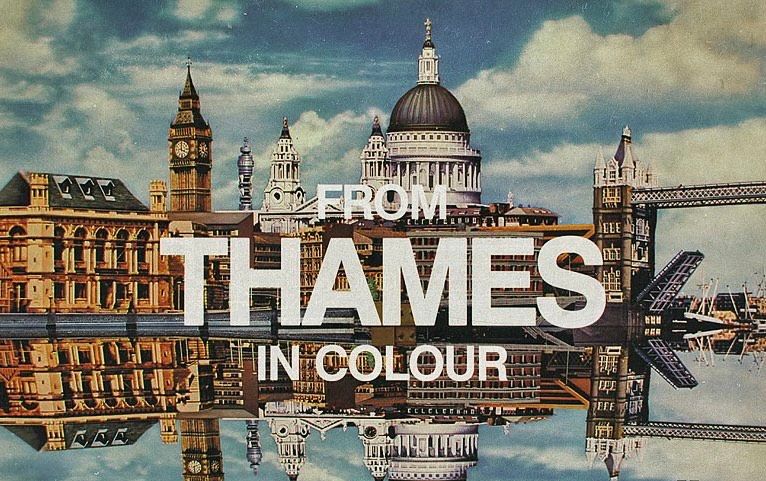HOME TIME

You'd get home and drop like a falling statue onto the sofa, turning the rental television on with the remote you'd just recovered from the crevices of the dark, moss green couch shaped like a skateboard half pipe.
Primetime for us kids back then was between 4 and 6 in the afternoon when the best shows were 'Bananaman', 'The Sooty Show', 'The Smurfs', 'He-Man', 'Inspector Gadget', 'Dogtanian and the Three Musketeers', 'Johnny Briggs', 'Danger Mouse', 'Grange Hill' and 'The Adventures of Tom Sawyer'.
But the show that defined post-school television bonanza euphoria better than any of the above was the Cosgrove Hall animated series of 'The Wind In The Willows' for Thames Television on ITV.
Before I even begin to wax lyrical about that masterpiece show, I just have to give a shout out to the iconic Thames skyline ident titles (see above) designed by Minale Tattersfield. Even to this day, just seeing it brings back my childhood in an instant. A hard act to follow and it was only five seconds long, but Ralph McTell's gentle finger picking of his guitar followed by his sincerely sung rendition of the title song managed it with aplomb. And then, as the camera zoomed slowly in on Mole, Ratty, Badger and Toad in their stop motion animated form, there was a sense of returning to some familar past that felt very much like a home from home similar to that feeling of having your first stories read to you at bedtime.
And even now, in my adult years, the burning question still persists for me, the dilemma of where I would prefer to live: Ratty's mossy, riverside home, Mole's warm underground bunker or Badger's 'dry as a woodpile' sanctuary in the woods. I might have to rotate through the seaons. But once again, I digress.
In their uncompromising gentle sweetness, there was an unusual grace and refined sensibility to Cosgrove's 'Willow' series that seems a million miles away from anything that would be commissioned today. Can it only be thirty five years since Western civillisation tore itself apart so carelessly? It reminds me of Peter Bogdanovich once musing on how could Ernst Lubitsch's 'Trouble In Paradise' have possibly been a mainstream entertainment back in 1932. How was it that audiences could be so sophisticated, he questions. Well, that's exactly how I feel about the warm and wise show based on Kenneth Graheme's original creation. There was even a Heinrich Heine poetry to the narrator's introductions to each episode that I would happily have collated in an anthology, so enchanting and evocative were they. It was a programme that had all the earthy authenticity of nature itself. Perhaps that had something to do with the tangibly, hands-on look of the production which makes modern CGI look like a vomit deluge of American candy on steroids.
We were lucky, I guess. There was some real effort invested in these shows and it paid off in the way it touched our young hearts and fed our curious minds.
After school television was a state of heaven back then and in those hours no world events or man made crises could penetrate that magical forcefield where we lost ourselves in stories while we wolfed down a packet of Walkers' Salt and Vineger crisps, a Twix and a can of coke and later hot buttered crumpets with a cup of tea.
By the time the six o clock news rolled around we had the sense, like campers packing up their chairs when a rain storm finally chases away the sun, that the good times were over. That feeling of joylessness of the adult world might just be a microcosm of the existential crisis that's hung over me the rest of my life.
Hopefully, some of us can still maintain that elysian atmosphere of children's television regardless of the dystopia of the 21st century that threatens to engulf us 24/7.
Which reminds me. Time to get the kettle on.